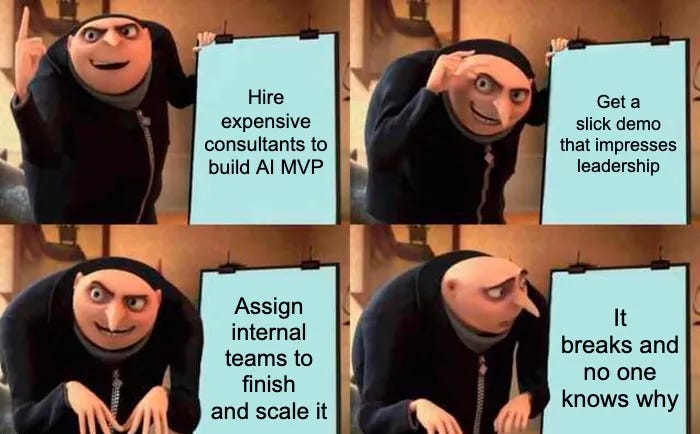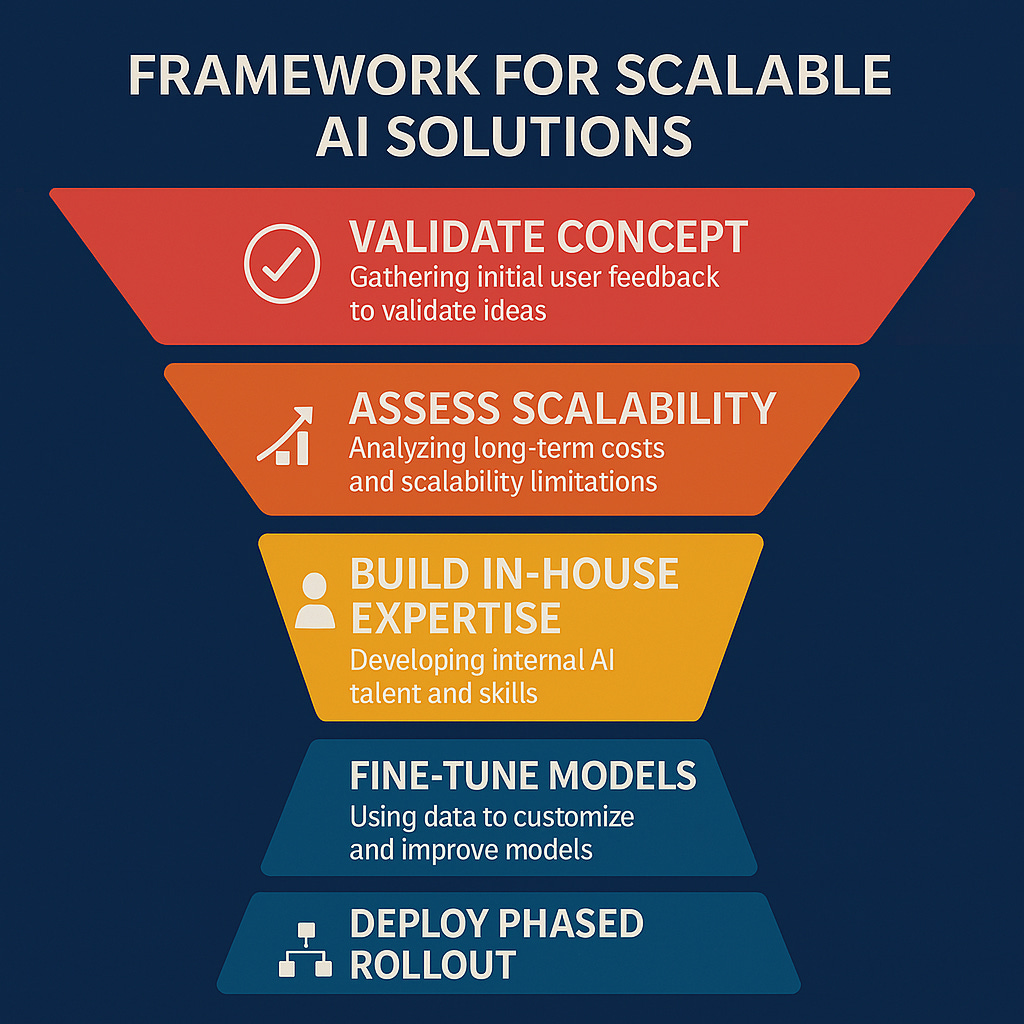“Let’s do something with AI” isn’t a strategy. Neither is hiring a consultant for a shiny MVP
There’s an urgent push from boards and executives to “do something with AI.” Nearly 99% of CEOs say they’re investing in generative AI this year, and 68% plan to funnel up to $250M into it.
The pressure is high, the budgets are huge - and the risk of waste is even bigger.
Here’s what’s happening: executives, driven by AI FOMO, are demanding fast results. Internal teams often lack the experience or resist change. As a result, companies turn to consultants who build flashy MVPs and promise ambitious outcomes. But once it’s time to move from prototype to production, it starts falling apart.
Why AI projects fail (a lot)
AI is probabilistic, not deterministic. It doesn’t work like traditional software. You can’t treat it like a calculator where 2+2 always equals 4.
Internal engineers are thrown into AI projects without the necessary experience, tooling, or data infrastructure.
Getting to 80% is relatively easy. Getting from 80% to 95%? That’s the hard (and expensive) part.
Leaders don’t always realize that MVP ≠ production-ready. This mismatch creates chaos, wasted money, and broken trust in AI.
We’ve seen this story before - remember the data science hype a decade ago? Everyone jumped in, then realized their infrastructure wasn’t ready. The same mistake is playing out again with AI.
If mishandled, this gap can erode trust in both AI initiatives and consulting practices- potentially setting back progress across the broader AI movement. And within the company, it often leads to frustration, disillusionment, and wasted resources.
And when it fails, it really fails:
A car dealership chatbot sold a Chevy for $1. (VentureBeat)
A lawyer used AI in court and cited fake cases. (Forbes)
Even Apple faced heat for overpromising and underdelivering on AI features. (The Verge)
So what can we do about it?
Take a long-term view. Move fast - but not blindly. AI will reshape your business. Treat it like a transformation, not a side project.
MVP ≠ ready for production. Fast wins are great for learning. Don’t confuse them with something that can scale.
Upskill your teams. AI systems require new skills. Invest in talent who understand data pipelines, feedback loops, and AI-specific engineering.
Respect the nature of AI. AI’s probabilistic nature is a feature, not a flaw. Work with it - not against it.
Fix your data. Dynamic, contextual, and clean data is what fuels successful AI. Without it, even the best models won’t help you.
Failure is part of the journey. Over 80% of AI projects fail - often due to poor data, scope mismatch, or unrealistic expectations. That doesn’t mean AI is broken, your approach might be.
And yes, it’s possible to make it work
In one of my recent newsletters, I shared a story from my own experience - where taking an internal, strategic approach helped reduce projected annual costs from over $700,000 to under $50,000. Here’s the full breakdown and how we did it.
Or take Novo Nordisk as another example: they now generate 90% of Clinical Study Reports with AI, cutting a 12-week process down to just 10 minutes - without layoffs. They simply reallocated talent and built smartly. (Case Study)
There are more examples – I’ll share in my upcoming reviews. If you’re navigating these waters too, subscribe for more practical updates and lessons.



Excellent write-up. Most importantly, as you rightly put it, treat it as a transformation and not as a side project.